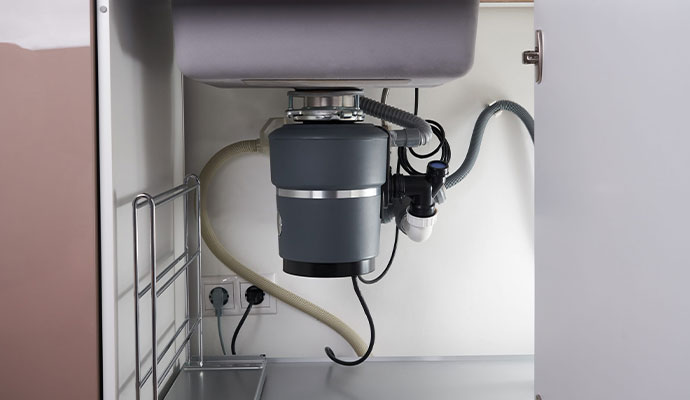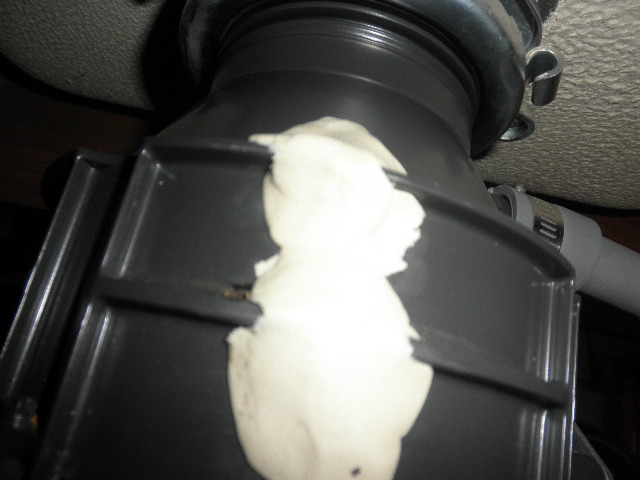Effortless Steps to Stop a Leak in Your Garbage Disposal
Effortless Steps to Stop a Leak in Your Garbage Disposal
Blog Article
What're your beliefs about Why Is ?

Waste disposal unit are vital cooking area devices that help in disposing of food waste effectively. However, a leaking garbage disposal can be an aggravating and unpleasant issue to handle. The good news is, several leaks can be fixed quickly with a few basic actions. In this post, we will talk about just how to repair a dripping waste disposal unit successfully.
Introduction
Garbage disposals are mounted under cooking area sinks and are designed to shred food waste into smaller sized pieces, allowing it to travel through the plumbing system quickly. While these devices are generally reputable, leaks can occur in time because of wear and tear, loosened connections, or damages to the system.
Common Sources Of Leakages in Trash Disposals
Worn Seals and Gaskets
Seals and gaskets play a crucial function in protecting against water from leaking out of the garbage disposal. In time, these elements can deteriorate, causing leakages around the disposal device.
Loose Connections
The links in between the garbage disposal and the plumbing system can end up being loose with time, creating water to leak out during procedure.
Cracks or Openings in the Disposal Unit
Physical damage to the waste disposal unit, such as splits or holes in the real estate, can likewise cause leaks.
Determining the Source of the Leakage
Before trying to deal with a dripping garbage disposal, it is necessary to identify the resource of the leakage. This can generally be done through visual examination or by performing simple examinations.
Visual Assessment
Inspect the waste disposal unit device thoroughly for any kind of indications of water leak. Pay close attention to locations around seals, gaskets, and connection factors.
Evaluating for Leaks
One method to check for leakages is by running water through the disposal unit and looking for any visible indications of leakage.
Devices and Products Needed for Dealing With a Leaking Waste Disposal Unit
Before beginning the fixing process, collect the essential tools and products, including a screwdriver, adjustable wrench, plumbing's putty, replacement seals or gaskets, and epoxy or patching product for repairing fractures or openings.
Step-by-Step Guide to Taking Care Of a Dripping Garbage Disposal
Turn Off the Power
Before attempting any repairs, guarantee that the power to the waste disposal unit system is shut off to prevent the risk of electric shock.
Find the Leak
Determine the specific area of the leak and identify the reason.
Tighten Connections
Use a wrench to tighten up any type of loosened connections between the disposal system and the pipes system.
Replace Seals or Gaskets
If the leak results from worn seals or gaskets, eliminate the old components and change them with brand-new ones.
Patching Splits or Holes
For splits or openings in the disposal device, usage epoxy or a suitable patching product to secure the damaged location.
Checking the Garbage Disposal After Repair
Once the repair service is total, check the waste disposal unit by running water with it to ensure that the leakage has been dealt with.
Preventive Maintenance Tips to Avoid Future Leakages
To prevent future leakages, it is important to carry out normal upkeep on your garbage disposal. This consists of keeping it tidy, staying clear of putting non-food items or hard things down the disposal, and occasionally checking for leaks or other problems.
Verdict
To conclude, dealing with a dripping garbage disposal is a reasonably uncomplicated procedure that can be finished with basic devices and products. By following the steps described in this post and practicing precautionary upkeep, you can maintain your waste disposal unit in good working problem and prevent expensive fixings in the future.
What to Do About a Leaking Garbage Disposal
A leaking garbage disposal often goes unnoticed until you confront a sopping cabinet, a foul-smelling puddle, or an audible drip-drip-drip from the unit. The fix can be frustrating, too, because the leak can stem from a number of components in the system. Fortunately, with a little sleuthing, you can zero in on the leak and—depending on the exact location—stop the icky oozing and repair the component that caused it. Worst case scenario, if it turns out that the garbage disposal must be replaced, installing a new one is a reasonable do-it-yourself task for those with basic plumbing skills. Read on to keep the cash you’d otherwise hand over to a pro.
Prepare to find the leak
Prior to testing the garbage disposal for leaks, unplug it at the wall outlet and turn off the power from the breaker box to prevent electrical shock. Then insert a watertight sink stopper into your sink drain and wipe the unit dry with a clean cloth. In any handy container, mix a few drops of food coloring into a few cups of water, and pour the dyed water onto the sink stopper to help you locate the leak.
Investigate the source
the top, where the disposal meets the sink drain the side, where the dishwasher hose or main drain pipe connects to the disposal or the bottom of the unit Inspect each of these locations while gliding a light-colored rag over the unit; the dyed water will readily show on the rag and reveal the location of the leak. If a leak isn’t immediately apparent, remove the sink stopper and pour a few more cups of dyed water down the sink drain, then check for leaks again. Leaks near the top of the unit are more likely to show themselves while the sink is plugged, while side and bottom leaks are more noticeable while the sink is unplugged.
The metal sink flange that sits directly inside the sink drain is typically sealed around the top with plumber’s putty (a clay-like sealant) and then secured from under the sink with bolts. If the plumber’s putty deteriorates, or the bolts loosen, the flange can no longer form a watertight seal between the sink drain and the disposal—which could cause a leak at the top of the unit.
To reseal the leaky flange, you must first detach the garbage disposal. Start by loosening the screws securing the main drain pipe to the disposal, then loosen the screws in the metal clamp securing the dishwasher hose to the disposal and detach the drain pipe and dishwasher hose from the disposal. Loosen the screws in the mounting ring that connects the disposal to the metal mounting assembly beneath the sink, then pull down the disposal and carefully set it on a clean, dry surface. Loosen the bolts in the mounting assembly with a wrench, then pull down the mounting assembly and set it near the disposal.

We had been shown that editorial on Garbage Disposal Leaking From Bottom from someone on a different website. Are you aware of someone else who is looking into the niche? Take a moment to promote it. We value reading our article about Garbage Disposal Leaking From Bottom.
Schedule A Service Call Report this page